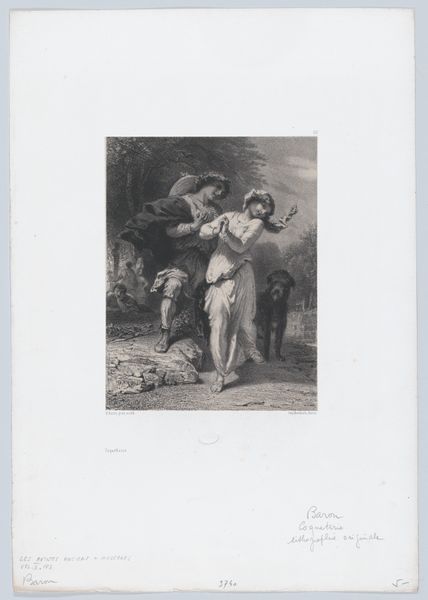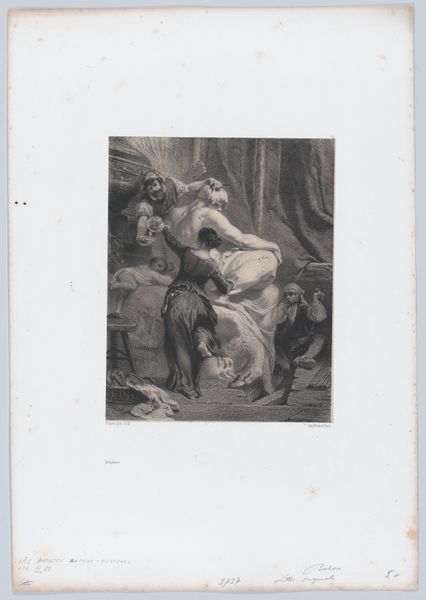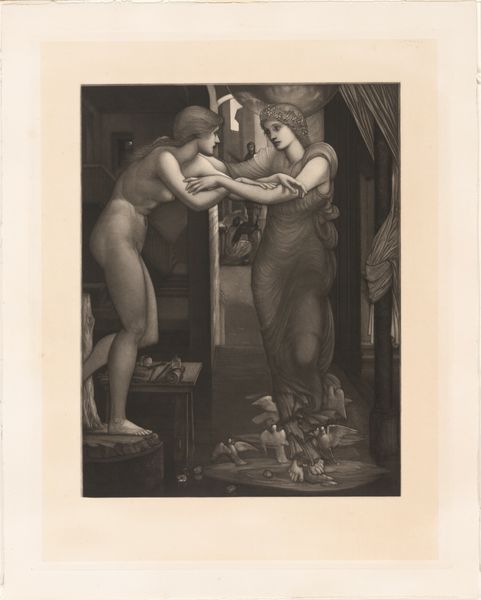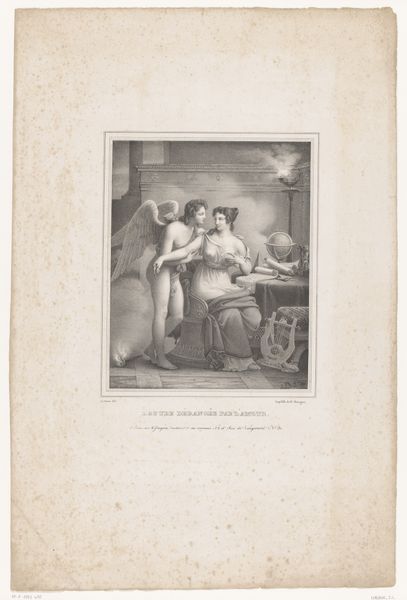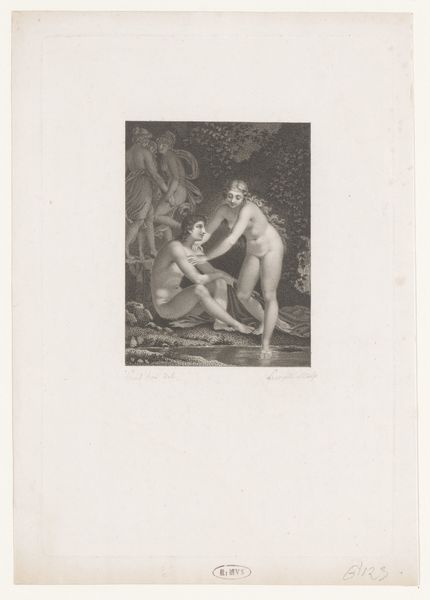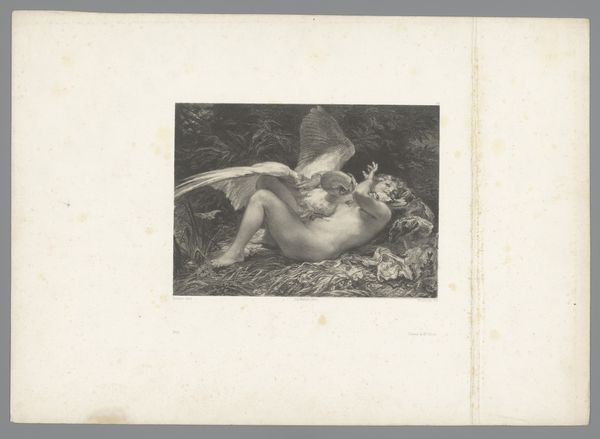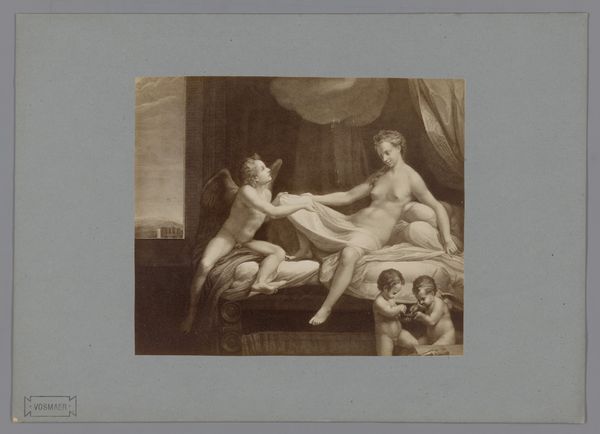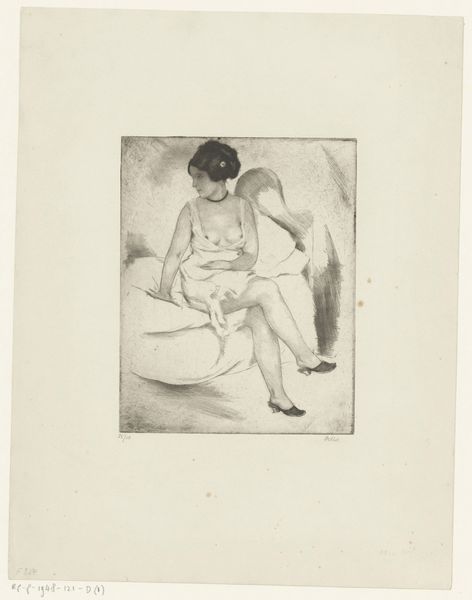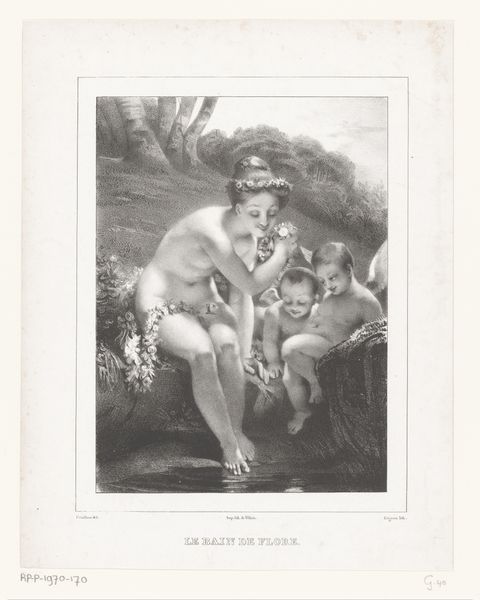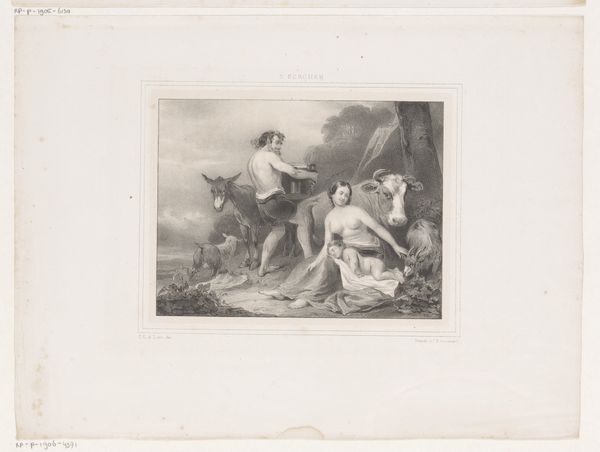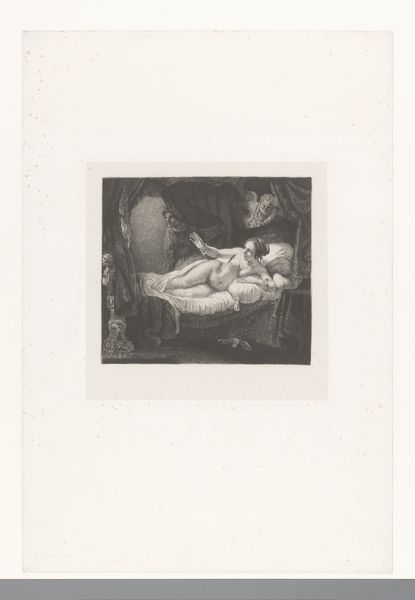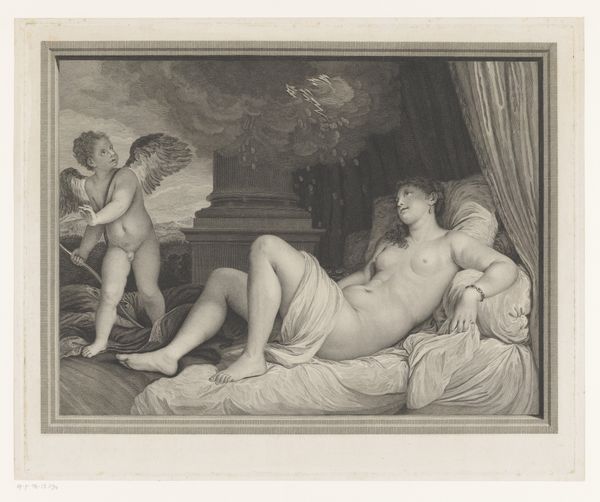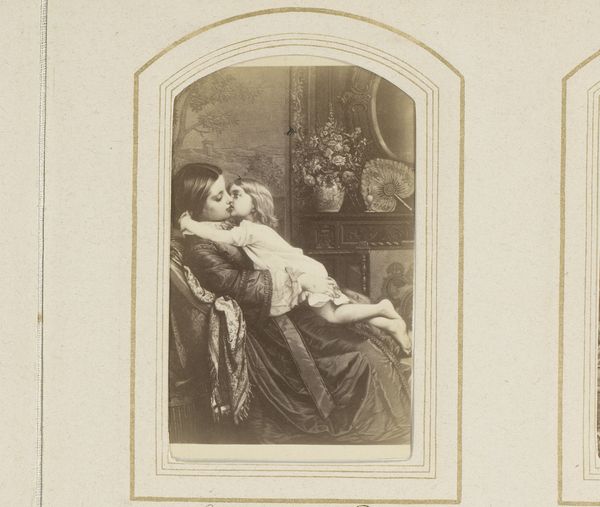
Dimensions: height 447 mm, width 313 mm
Copyright: Rijks Museum: Open Domain
Célestin Nanteuil created this artwork, Pygmalion met Galatea en Amor, in the 19th century using lithography. It depicts the mythological story of Pygmalion, a sculptor who fell in love with his creation, Galatea, whom Venus then brought to life. This artwork reflects the social and cultural values of 19th-century France, particularly the prevailing fascination with classical mythology. Here, the artist seeks to challenge Academic artistic conventions by depicting the human body realistically and conveying the sense of emotionality and intimacy between the figures. Also, the image suggests that artistic creation can transcend the boundaries between reality and imagination. This relates to the broader Romantic movement of the time. Historians would likely use texts like Ovid’s “Metamorphoses,” where the myth of Pygmalion originates, to understand this artwork better. By understanding the context in which art is made, we can fully appreciate its meaning and its power to reflect and shape society.
Comments
No comments
Be the first to comment and join the conversation on the ultimate creative platform.
